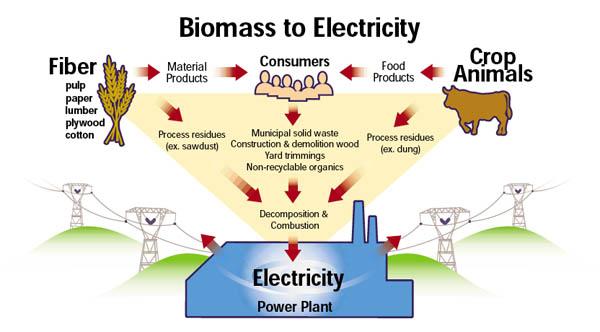Notifications

8 minutes, 50 seconds
-143 Views 0 Comments 0 Likes 0 Reviews

Biomass Electricity Market Growth is projected to grow from USD 133.97 billion in 2025 to USD 224.16 billion by 2035, driven by demand for sustainable energy, government support, and tech advancements—reflecting a CAGR of 6.4%.
Biomass electricity is generated by burning organic matter to produce steam, which drives turbines connected to electricity generators. It’s a relatively mature technology that can be integrated into existing power infrastructures, making it a flexible and scalable option for many regions.
Biomass is considered carbon-neutral because the CO₂ released during combustion is offset by the carbon absorbed during the growth of the biomass feedstock. However, its true environmental impact depends on sourcing practices and technology efficiency.
Request PDF Sample Copy of this Report https://wemarketresearch.com/reports/request-free-sample-pdf/biomass-electricity-market/1685
Environmental Benefits
Biomass power significantly reduces greenhouse gas emissions compared to coal or natural gas. When sustainably sourced, it can be nearly carbon-neutral over its lifecycle.
Government Policies and Incentives
Many governments offer feed-in tariffs, tax credits, and grants to encourage biomass power development. The EU, for instance, supports biomass through its Renewable Energy Directive, while the U.S. has multiple federal and state-level incentives.
Waste Management Solutions
Biomass electricity generation provides an effective method of waste disposal, especially in agricultural and urban areas. Converting waste to energy not only generates power but also reduces landfill use and methane emissions.
Opportunities:
The biomass electricity market is gaining momentum due to increasing government support through subsidies and sustainable energy policies. Growing concerns over climate change and greenhouse gas emissions are driving new regulations that favor biomass over fossil fuels like coal and oil.
Challenges:
Biomass electricity faces stiff competition from alternative energy sources such as solar, wind, and geothermal. Biogas plants, in particular, are less effective in colder climates due to the need for consistent heat to maintain optimal digestion temperatures (~37°C). Additionally, biomass plants rely on location-specific raw materials, limiting scalability compared to more widely accessible resources used in solar and wind energy.
Enquire for customization in Report https://wemarketresearch.com/customization/biomass-electricity-market/1685
The biomass electricity market is undergoing a significant transformation driven by the global shift toward renewable and sustainable energy sources. As governments and industries aim to reduce carbon emissions and dependence on fossil fuels, biomass has emerged as a viable alternative due to its ability to convert organic waste into energy. Key trends shaping the market include increased investments in advanced biomass conversion technologies, supportive regulatory frameworks, and a growing focus on circular economy practices. Additionally, innovations in biomass supply chains and the integration of biomass with other renewable systems are enhancing efficiency and scalability, making biomass electricity a key component of the global clean energy transition.
By Feedstock
Solid Biofuel
Liquid Biofuel
Biogas
By Technology
By End-user
Europe leads the global biomass electricity market, holding around 40% of the market share in 2024. Strong policy support, including the EU’s Renewable Energy Directive, drives biomass adoption across the region. Germany leads within Europe with an 18.6% share and 10 GW of installed capacity in 2023, supported by the Climate Action Programme 2030. The UK follows closely, with 875 MW of bioenergy projects under construction as of February 2025. Sweden and Denmark also play key roles, with high renewable energy shares and a focus on sustainable biomass sourcing. Meanwhile, the Asia-Pacific region is projected to grow at the fastest rate over the forecast period.
Fossil Fuel Electricity Market
The biomass electricity market is expected to continue its upward trajectory, driven by technological innovations and the global push for decarbonization. With increasing investments in renewable infrastructure and heightened environmental awareness, biomass will remain a key component of the future energy mix—particularly in rural and agricultural regions where waste feedstock is abundant.
Q1. What is the size of the market for biomass electricity?
Q2. How quickly is the market for biomass electricity expanding?
Q3. What is the Biomass Electricity Market's expected compound annual growth rate?
Q4. How do I obtain a sample report on the market for biomass electricity?
Q5. What is the magnitude of the market for biomass electricity?
Q6. In which market category is the biomass electricity market anticipated to grow?
Q7. Which companies dominate the biomass electricity market?
Q8. What is the Biomass Electricity Market's conclusion?
Click Here for Purchase Report https://wemarketresearch.com/purchase/biomass-electricity-market/1685?license=single
Biomass electricity offers a practical solution for clean, renewable, and reliable power generation. As the world accelerates its shift toward sustainable energy, biomass is well-positioned to play a crucial role—especially in supporting energy diversity, rural development, and waste management.
WE MARKET RESEARCH is an established market analytics and research firm with a domain experience sprawling across different industries. We have been working on multi-county market studies right from our inception. Over the time, from our existence, we have gained laurels for our deep-rooted market studies and insightful analysis of different markets.
Mr. Robbin Joseph
Corporate Sales, USA
We Market Research
USA: +1-724-618-3925
Websites: https://wemarketresearch.com/
Email: sales@wemarketresearch.com

